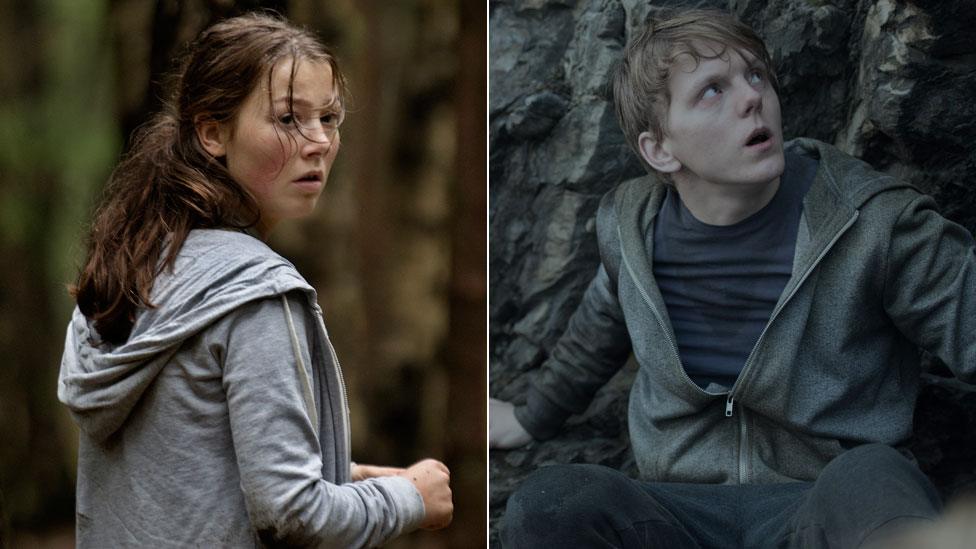Twin films: How two new Pinocchio movies reflect a Hollywood trend
- Published
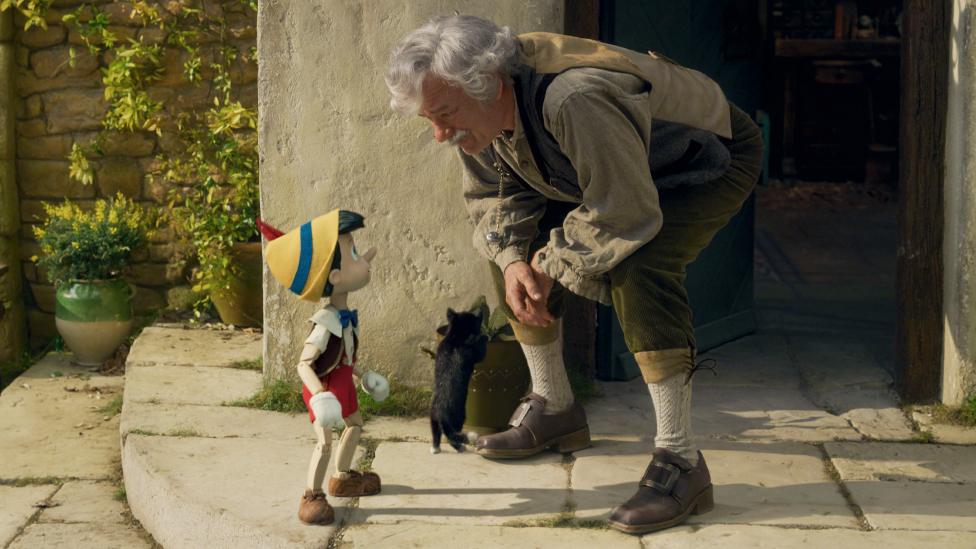
Tom Hanks will play Geppetto in Disney's forthcoming adaptation of the tale
Many film lovers are eagerly anticipating the forthcoming release of Pinocchio. But others are less bothered - they're much more excited about the forthcoming release of Pinocchio.
In the next four months, both Disney and Netflix will unleash their own versions of the classic tale about the boy whose nose grows when he lies.
Disney's is a family-friendly, live-action remake, directed by Robert Zemeckis and starring Tom Hanks as Geppetto.
Netflix's version, meanwhile, is a stop-motion animated film from Guillermo del Toro, the Oscar-winning director behind The Shape of Water. His will see Ewan McGregor star as Jiminy Cricket.
Del Toro's film has taken a particularly long time to come to fruition. He announced his intention to make Pinocchio 14 years ago, but struggled to attract financing for the film and eventually announced its cancellation in 2017.
However, the project was revived the following year when Netflix confirmed they were picking it up., external
It is sheer coincidence that it now finds itself colliding with Disney, which has in recent years been producing live-action remakes of some of its biggest historical hits - including Aladdin, Mulan and The Lion King.

Pinocchio is released on Disney+ next week, with Netflix's version following in December
Of course, Pinocchio has been made for the screen several times since the classic 1940 original, which was adapted from the 1883 children's novel by Carlo Collodi.
But why does Hollywood so frequently release twin films - two movies that are not only about the same thing, but often released around the same time?
"This phenomenon goes back decades," says film and awards season YouTuber Luke Hearfield. "There are numerous reasons for it, sometimes it really is just coincidence, two people having the same idea at the similar time.
"But I think now it's happening more than ever because we're living in the content era, more and more movies are being pumped out, so there's bound to be people having similar ideas."
We last wrote about this phenomenon in 2018, following decades of examples, including Antz and A Bug's Life; Deep Impact and Armageddon; and Friends With Benefits and No Strings Attached.
But plenty more examples have sprung up recently, and they just keep coming.
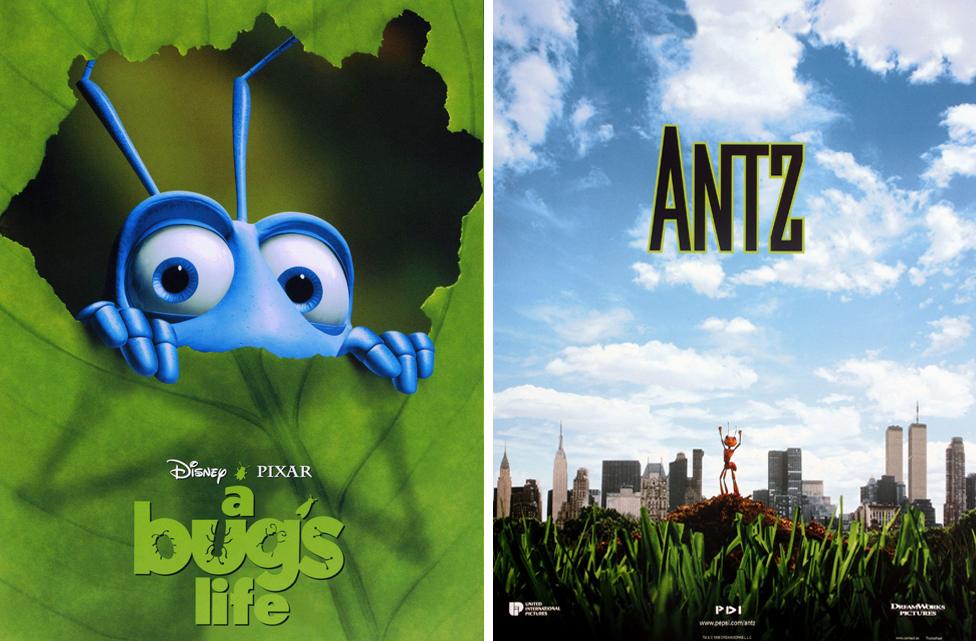
Two different animated children's films about the lives of insects did big business at the box office in the late 1990s
Often, real-life news events spark a rush in producers wanting to tell a story on screen. The 2018 Thai cave rescue prompted two dramatisations (The Cave and Thirteen Lives) and a documentary (The Rescue).
"Steve Jobs died and we saw two Jobs movies come out - one directed by Joshua Michael Stern and one by Danny Boyle," recalls Hearfield.
Other times, he notes, it might be due to a significant anniversary. "When we hit the centenary of World War One, we started getting more and more films about it, such as They Shall Not Grow Old, 1917, The Light Between Oceans, even DC's Wonder Woman was set during the war."
But while it's possible for two studios to be working on similar films accidentally, on other occasions, they deliberately compete with one another. "Sometimes it is a race between production companies, when they know there is something that people will be interested to watch, there's a sense of who can churn it out first."
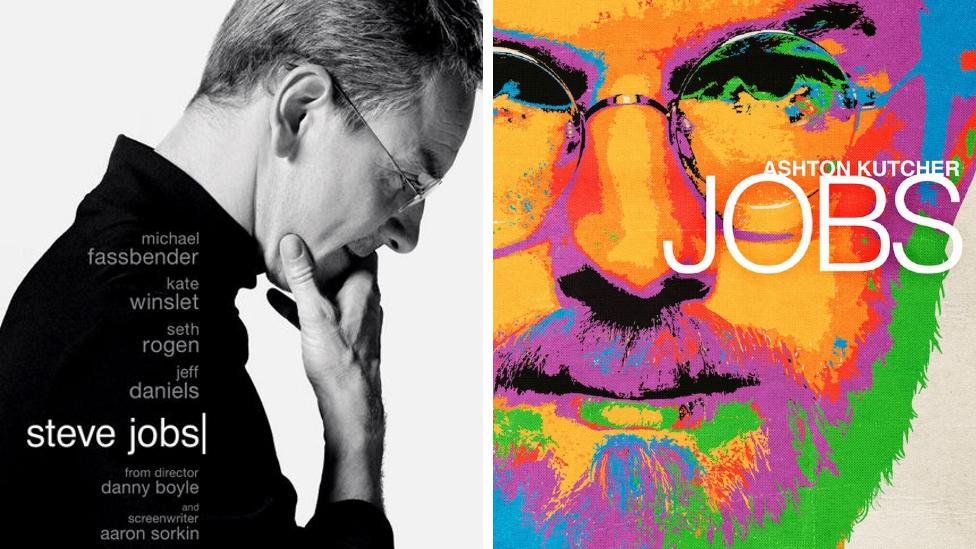
Michael Fassbender and Ashton Kutcher both portrayed the late Apple co-founder Steve Jobs, in films released two years apart
There are several cases where both the films are successful at the box office. But other times, one film becomes so huge, the public is barely aware of the other.
"Sometimes there's one that wins and one that has a more beloved fanbase or stands the test of time better," Hearfield says, adding that this can be down to a lack of funding and marketing.
But, he adds, clashes aren't necessarily a problem. "I'm still a sucker for A Bug's Life and Antz - I actually really liked both those movies a lot! I was a kid when they both came out, but I didn't really notice the similarities as a child. They're both about insects, but they're different stories, and both were enjoyable.
"There's nothing wrong with having similar content as long as there is enough distinguishing content."
Here are some of the more recent examples of so-called twin films:

A Quiet Place & The Silence
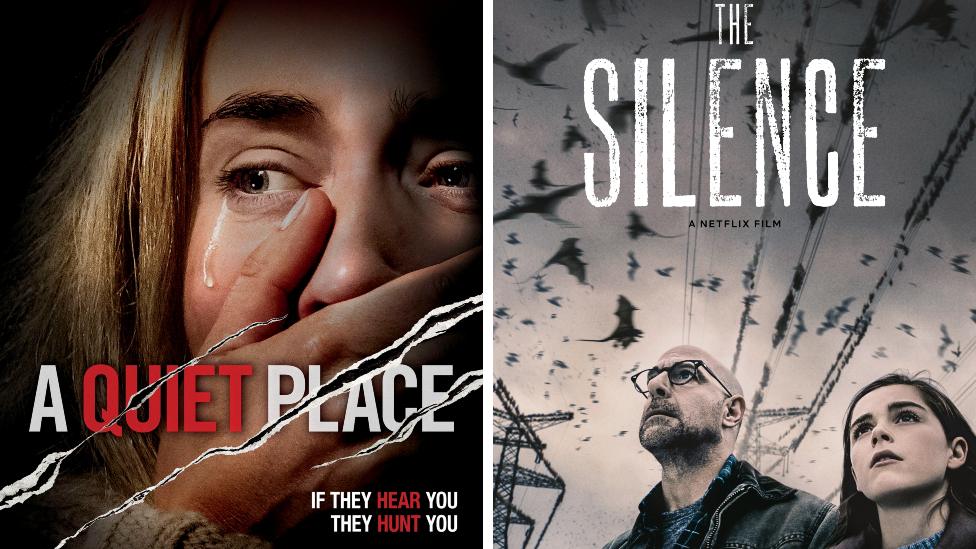
Storyline: A family with a deaf daughter struggles to evade deadly creatures who detect sound.
Release dates: April 2018 for A Quiet Place, with The Silence following a year later (but the latter actually began filming first).
Stars: Emily Blunt stars in A Quiet Place, while her brother-in-law Stanley Tucci appears in The Silence.
Box office: The Silence was primarily released on Netflix so only made $2.3m (£1.8m) from its limited cinema release. A Quiet Place, which had a full theatrical release, made $340m (£278m).
Trivia: While a deaf actress, Millicent Simmonds, played the family's deaf daughter in A Quiet Place, The Silence was criticised by the deaf community, external because its equivalent character was played by a hearing actress.
Churchill & Darkest Hour
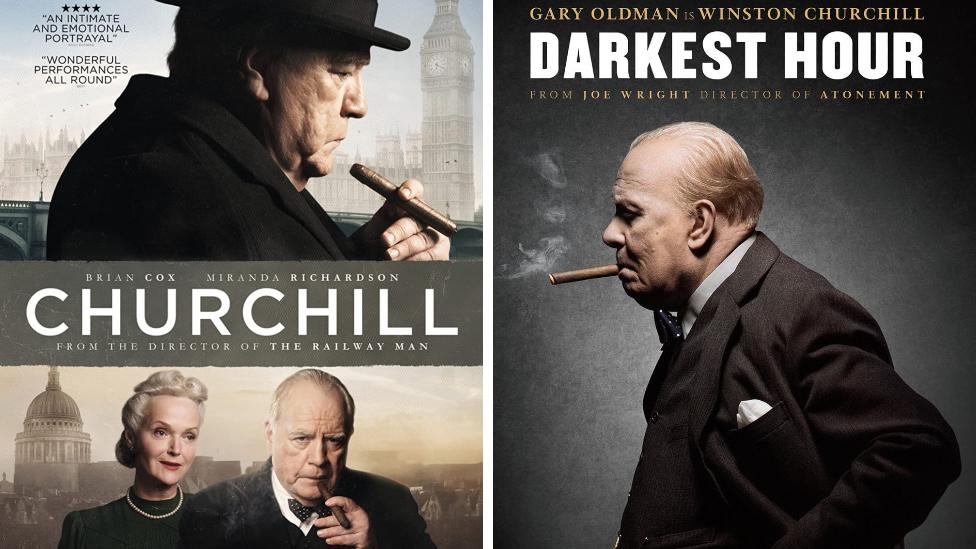
Storyline: In the 1940s, British Prime Minister Winston Churchill attempts to lead his country through World War Two.
Release dates: June 2017 for Churchill, with Darkest Hour following later that year.
Stars: Succession star Brian Cox played the PM in Churchill, while Gary Oldman won an Oscar for his portrayal in Darkest Hour.
Box office: $150m (£122m) for Darkest Hour, but just $6m (£4.9m) for Churchill.
Trivia: Cox has spoken candidly about the rival film, and the lack of recognition for his.
"I was pissed off," he told Mark Kermode last year., external "Particularly when I saw the other movie. I thought it was bloody awful!
"I mean, Gary's a great actor, but…" Cox said, before trailing off. "You learn not to be attached, to let go."
Mowgli & The Jungle Book
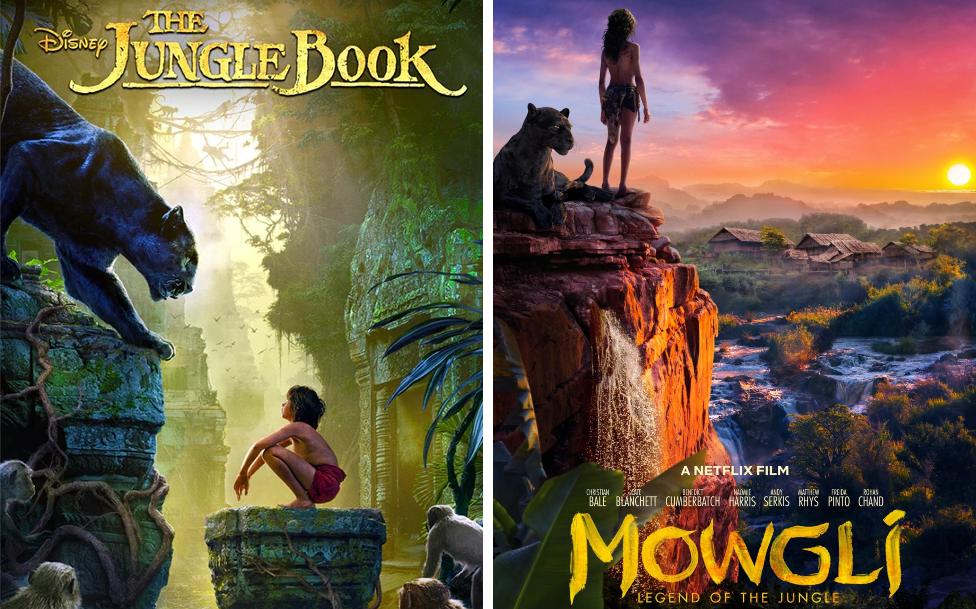
Storyline: A boy, Mowgli, is raised by talking animals in the jungles of India.
Release dates: Both were due to come out in 2016, but the release of Disney's prompted Warner Bros to delay theirs significantly, ultimately selling it to Netflix, who released it in 2018.
Stars: Benedict Cumberbatch and Cate Blanchett in Mowgli; Idris Elba and Scarlett Johansson in The Jungle Book.
Box office: An extraordinary $966m (£790m) for The Jungle Book, but Mowgli was only released on Netflix.
Trivia: Andy Serkis previously told BBC News that Disney's film "really began to make the studio fearful" about releasing theirs.
But, he said: "[The other film] never really bothered me because I knew that Disney's was always going to be a four-quadrant, big, wide, family, popcorn film probably emulating the 1967 animation, using the songs etc.
"Ours was nowhere near that story, we were doing something completely different."
Boy Erased & The Miseducation of Cameron Post
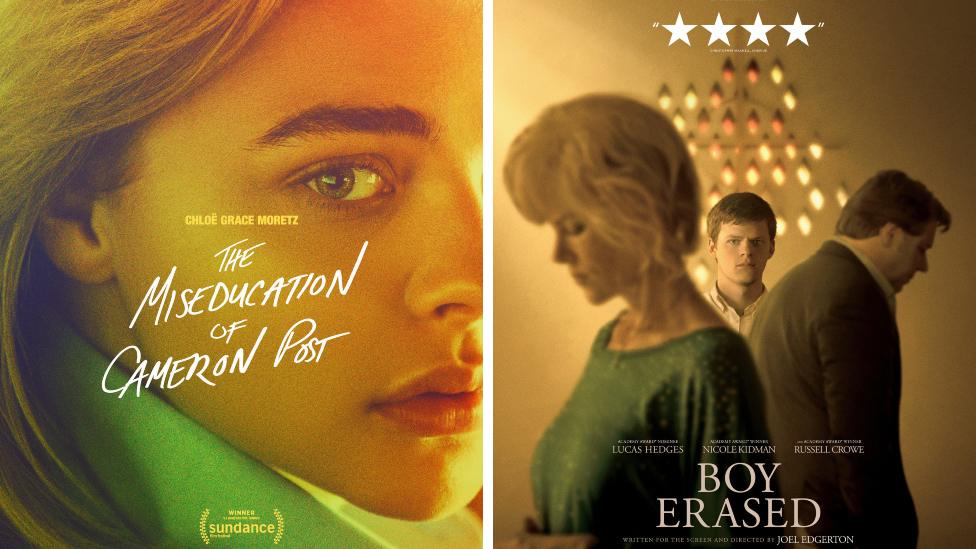
Storyline: A family sends their gay teenager to undergo "conversion therapy" in an attempt to turn them straight.
Release dates: August 2018 for Cameron Post, with Boy Erased following three months later.
Stars: Lucas Hedges and Nicole Kidman in Boy Erased, Chloë Grace Moretz in Cameron Post.
Box office: $1.47m (£1.2m) for Post; $11m (£9m) for Boy Erased.
Trivia: "When I first heard, as we were about to head into pre-production, that another movie was being made, I was definitely like 'Oh, damn'," Boy Erased director Joel Edgerton told BBC News. "But I think that's the only time I've ever been at all worried about it.
"Because my answer to that is that every year I see there are like 20+ superhero movies, there's dozens of romantic comedies, there's 50 horror movies. It's like, if there isn't enough room in this time for two conversion movies in one space then that's crazy."
July 22 & Utøya
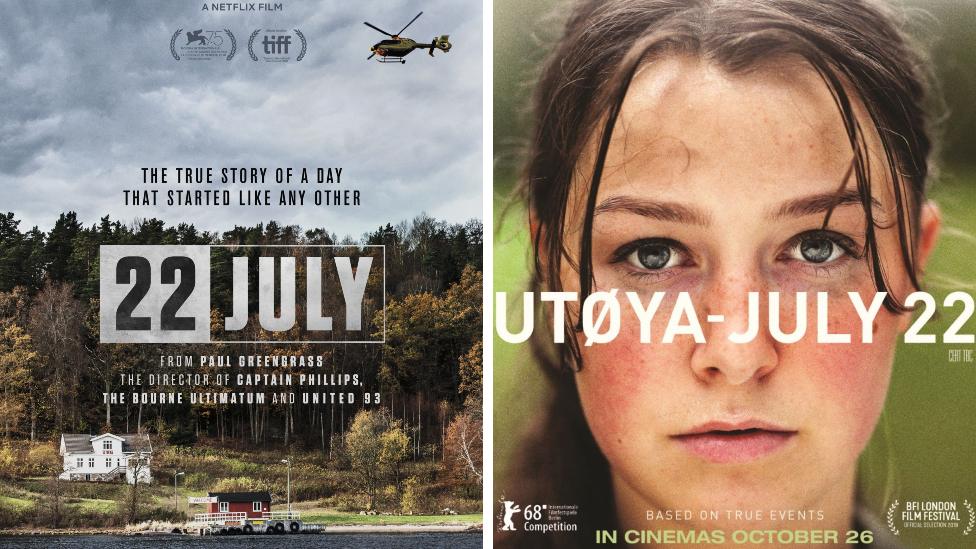
Storyline: Based on the horrific real-life events of July 2011, a Norwegian terrorist kills eight people after detonating a bomb in Oslo, before killing 69 people from a youth summer camp in a mass shooting on the island of Utøya.
Release dates: Both 2018 - with Utoya in March and 22 July following in October.
Stars: Andrea Berntzen and Aleksander Holmen in Utøya, Anders Danielsen Lie and Jon Øigarden in 22 July.
Box office: 22 July was released on Netflix but still took $3.7m, while Utøya made a similar $3.6m (both around £3m).
Trivia: The two films are very different in their approaches. 22 July begins with the attacks, but the rest of the film deals with Anders Breivik's trial.
Utøya, however, doesn't even feature the gunman as a character, instead treating him as an unseen or far-off threat as the film centres on the teenagers trying to shelter from his attack.
Box office takings are worldwide figures taken from Box Office Mojo, external. Release dates refer to the earliest general public release date.
Related topics
- Published2 April 2018
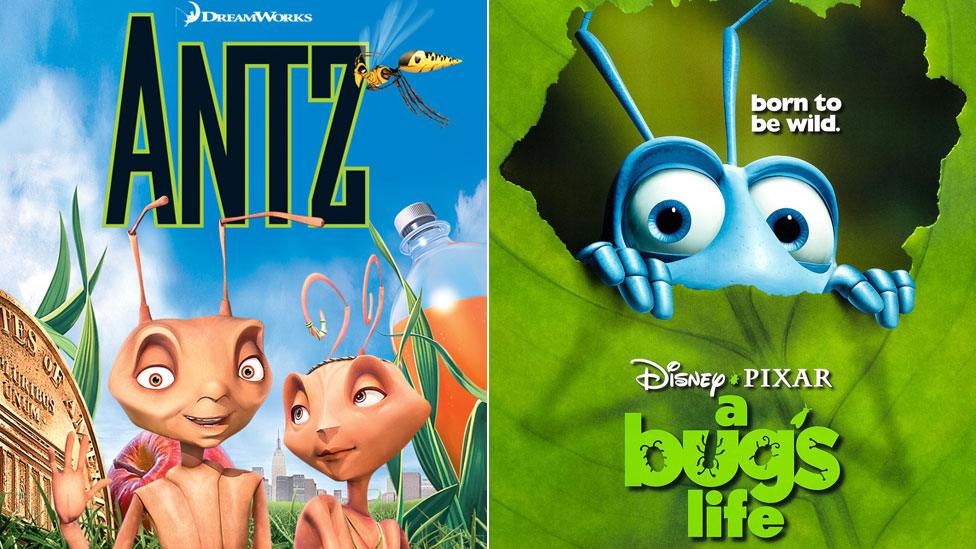
- Published11 December 2018
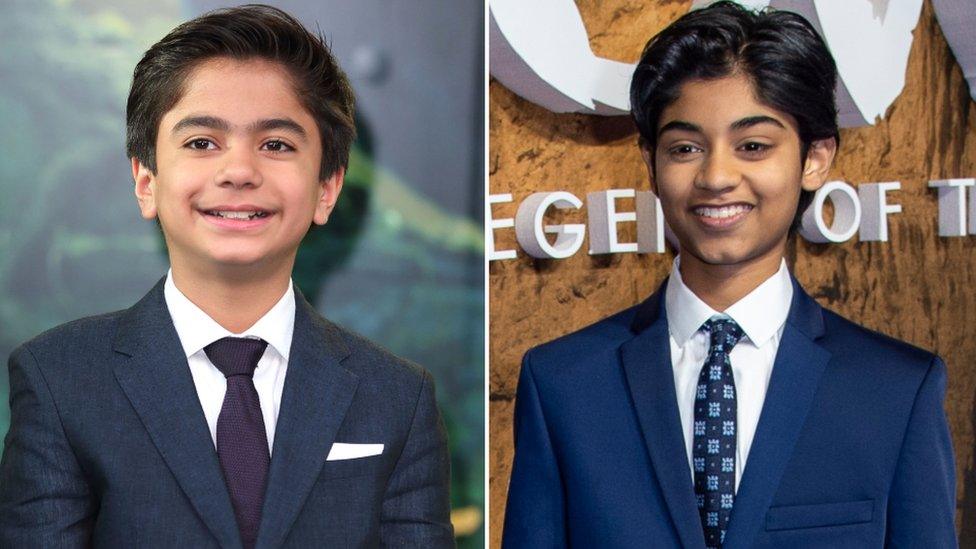
- Published10 October 2018
